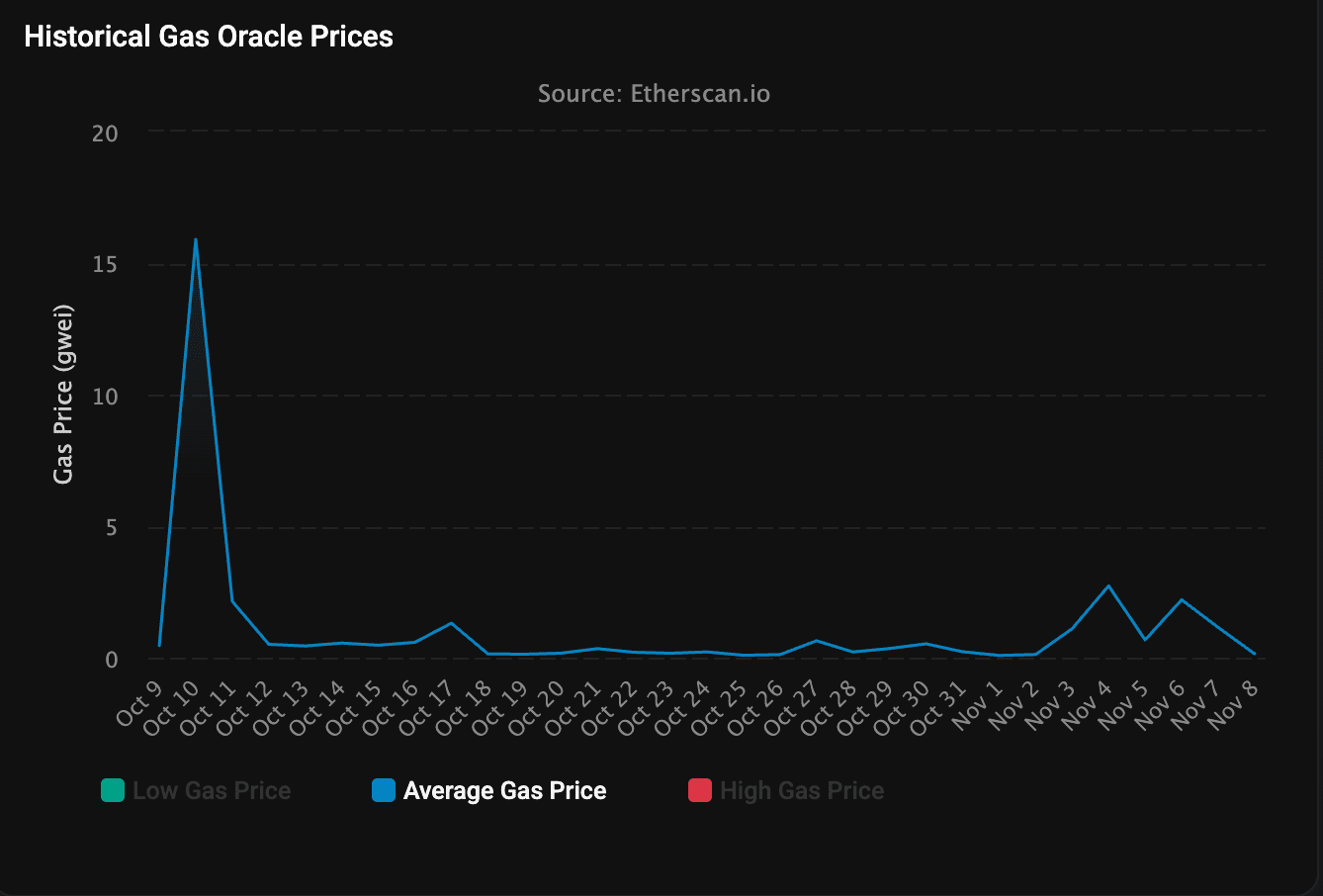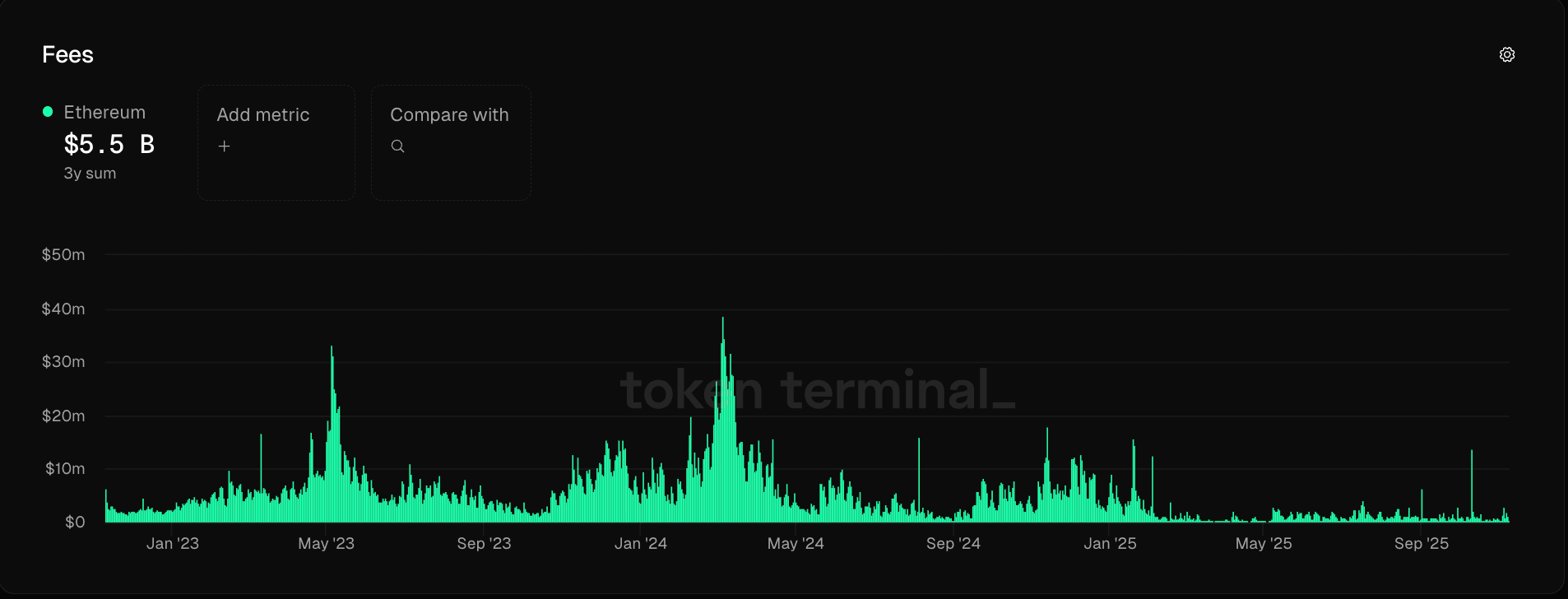Cheap network fees are a blessing for traders, but they could indicate long-term fundamental issues with Ethereum's revenue generation model.
Gas fees on Ethereum's layer 1 blockchain fell to just 0.067 Gwei on Sunday, amid a pause in cryptocurrency markets caused by the historic market crash in October. The average cost to execute a swap on Ethereum is only USD 0.11, sales of non-fungible tokens (NFTs) incur a fee of USD 0.19, connecting a digital asset to another blockchain network will cost users USD 0.04, and on-chain loans cost USD 0.09 at the time of writing this article, according to Etherscan. Ethereum network transaction fees reached a recent high of 15.9 Gwei on October 10, the day of the sudden market crash that caused some altcoins to lose more than 90% of their value in 24 hours. However, on October 12, fees dropped back down to just 0.5 Gwei and remained mostly well below 1 throughout October and November.

Investors and traders can take advantage of low transaction fees to execute on-chain transactions on the base layer. However, analysts and executives in the crypto industry warn that excessively low fees could pose a problem for the Ethereum ecosystem.
Ethereum's base layer has experienced a loss of revenue since 2024
During the bull run of 2021, transaction fees on Ethereum's layer 1 could cost users USD 150 or more during moments of network congestion. However, following the Ethereum Dencun upgrade in March 2024, which reduced transaction fees for Ethereum's layer 2 scaling networks, fees were significantly reduced, leading to a 99% decrease in Ethereum's revenue.

Critics argue that low network fees are unsustainable for any blockchain network and pose both financial and security challenges due to the lack of revenue to incentivize validators or miners to process transactions and protect the blockchain. Since fees respond to user demand, low fees and revenue could also indicate that users are abandoning a specific blockchain network. Ethereum, in particular, has opted for a scalability strategy that relies on an ecosystem of independent layer 2 networks, which represents a double-edged sword, according to a study by the cryptocurrency exchange Binance. While layer 2 networks allow Ethereum to scale and compete with newer, high-performance chains, layer 2 networks are also cannibalizing the revenue of the base layer, creating additional competition for Ethereum within its own ecosystem.
